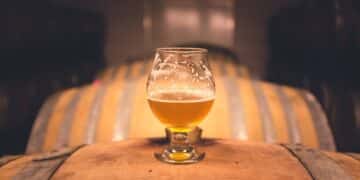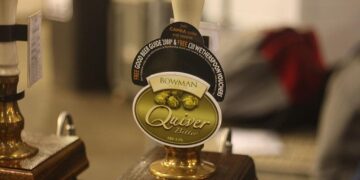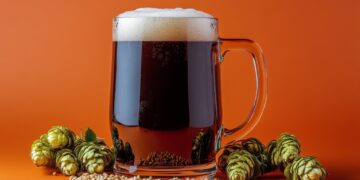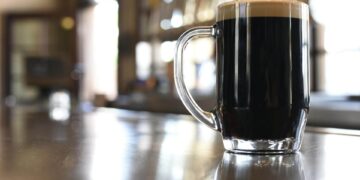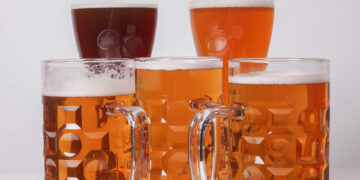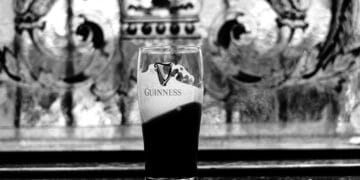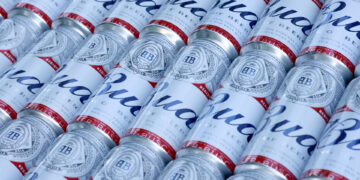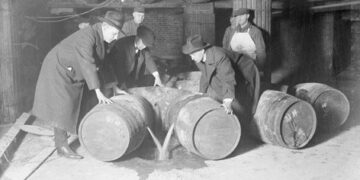Once you get accustomed to its unusual strong wheat taste, few beers can quench a thirst in the heat of the summer like the German Weissbier.
The Home of Wheat Beer
Recent enthusiasm across Europe and the USA for the distinctive ‘summery’ charms of wheat beer belies the fact that this is no inspired new brewing innovation but in fact one of the oldest beer types still in existence.
Wheat beer’s traditional homeland is Bavaria, where the practice of mixing at least 50% wheat in the mash to create a light coloured ale was pioneered several centuries ago and where many of the most internationally recognisable brands – including Paulaner, Erdinger, Schneider, Franziskaner and Weihenstephaner – are still produced there today.
It is ironic that one of the most traditional and distinctive of German beers is one that breaks the rules of the 16th century Reinheitsgebot purity laws which forbid any ingredients other than barley, hops and water, and which the nation has taken pride in strictly adhering to ever since as a badge of quality and superiority.
While so many unconventional and exotically flavoured beers were stamped out during the 1500s, wheat beer is believed to have survived the stringent brewing rules because the rulers of Bavariam, the Dukes of Wittelsbach, acquired a taste for it and so created a bureaucratic loophole for it to enable brewing to continue for their own private pleasure.
The general public were only able to share its delights when the laws were fully relaxed in 1850 to allow the Schneider brewery to brew wheat beers.
Hefeweizen and its Variations
In its home province wheat beer is usually referred to as Weissbier – which in translating as ‘white beer’ harks back to a time before pale ales when all other beers were dark – while the more literal Weizenbier is heard throughout Germany.
Although there are a number of different styles that vary in colour, flavour and strength, the classic German Weissbier is known as Hefeweizen. Literally translated as ‘yeast wheat’, this refers to the traditional unfiltered brew recognisable by its yeast sediment and cloudy appearance.
The most popular variation is Kristallweizen (‘crystal wheat’), which differs in having been filtered to remove the wheat proteins and the yeast from suspension, resulting in a clearer and less robustly wheaty flavour. It is commonly served with a slice of lemon. Other versions include Dunkelweizen (‘dark wheat’), which is brewed using darker malts, and Weizenbock, a stronger version commonly brewed in the colder months.
Aroma and Taste
Hefeweizens are typically relatively sweet and fruity with a full body. Aside from cloudiness, Hefeweizens are characterised by their aroma, where the fruity and spicy esters created by the yeast during fermentation typically conjure up aromas of cloves and banana, and notes of lemon, vanilla and even bubble-gum are not unusual.
Besides a particular bright fruity flavour distinctive to the types of yeast used in Bavaria, Hefeweizens are noted for their low hoppiness, which means very little bitterness. They have a relatively high level of carbonation, which is believed to be crucial in balancing the brew’s relatively malty sweetness.
The high protein level of the wheat combined with the highly effervescent nature of the style means that a thick head can be expected when the beer is poured.
Serving Suggestion
To achieve the classic Weissbier, the beer should always be served in its own glass, a tall and graceful design with a narrow pinched base and an almost bulbous head. The beer is poured smoothly into the tilted glass, and when poured out of a bottle it is recommended to roll the bottle before the final drops are dispensed in order to lift the sediment and help to create that pillowy and fragrant head and release the yeast into the beer.
Recommended Bavarian Wheat Beers Two of the most celebrated wheat beers are Weihenstephaner Hefe Weissbier, with its rich banana-clove nose and spicy, dry finish, and the historic Schneider Weisse which is characterised by its darker colour and its hints of licorice and toffee.
Maisels Weisse Original and Schöfferhofer Hefeweizen are regarded are great introductory wheat beers in being light, refreshing and easygoing but with enough character to get you hooked.






